Arrowhead Stadium
Introduction
Text-to-speech Audio
Named in symbolic honor of its home team, Arrowhead Stadium has been the home to the National Football League franchise the Kansas City Chiefs since its opening in 1972. After the Chiefs' arrival to Kansas City in 1963, they spent years sharing Municipal Stadium with the city’s Major League Baseball teams. To withstand the growing fan base of the two sports, the Truman Sports Complex was concepted as a dual-stadium complex with side-by-side baseball and football stadiums. Arrowhead Stadium opened on August 12, 1972 with a nearly sell-out crowd, and since then, enthusiasm for the Chiefs has continued to grow. Known as the loudest stadium in the world, Chiefs fans at Arrowhead set the Guinness World Record in 2014 at 142.2 decibels. Arrowhead Stadium offers one of the most energetic sports experiences in the nation and is also host to collegiate football games, music performances, festivals and events.
Images
The entrance to Arrowhead Stadium in Kansas City, Missouri.
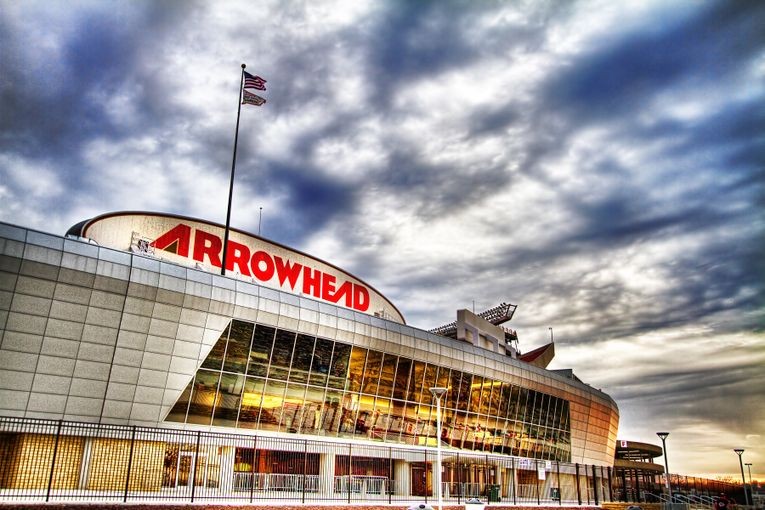
Completed in 1972, Arrowhead Stadium is the home to the Kansas City Chiefs.
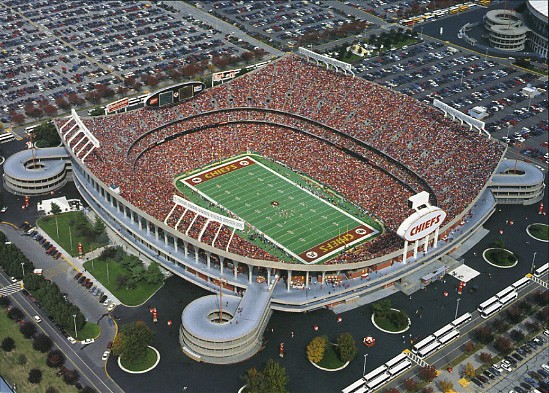
Known for its "Sea of Red," Arrowhead Stadium holds the Guinness World Record for the loudest stadium in professional sports.
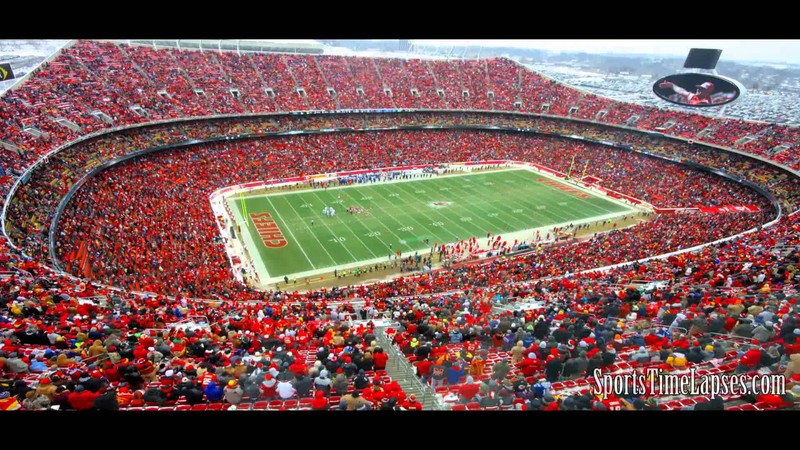
A 1969 model for the Jackson County Sports Complex. Courtesy of Missouri Valley Special Collections, Kansas City Public Library, Kansas City, Missouri.
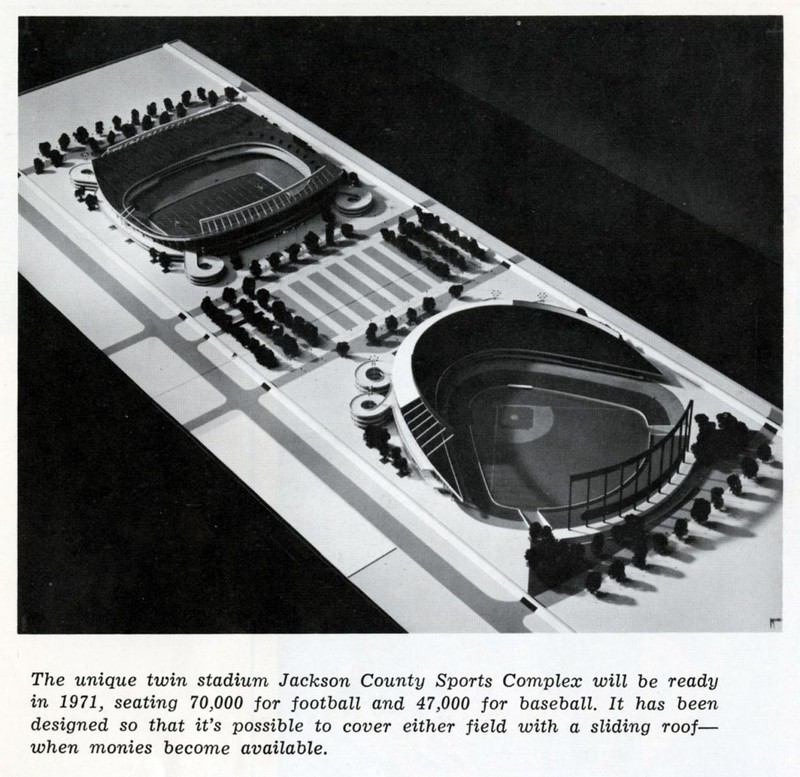
Kansas City Chiefs founder, Lamar Hunt c.1969. Courtesy of Missouri Valley Special Collections, Kansas City Public Library, Kansas City, Missouri.
%20MVSC.jpg)
Fans pack the parking lot of Truman Sports Complex to tailgate before a game.
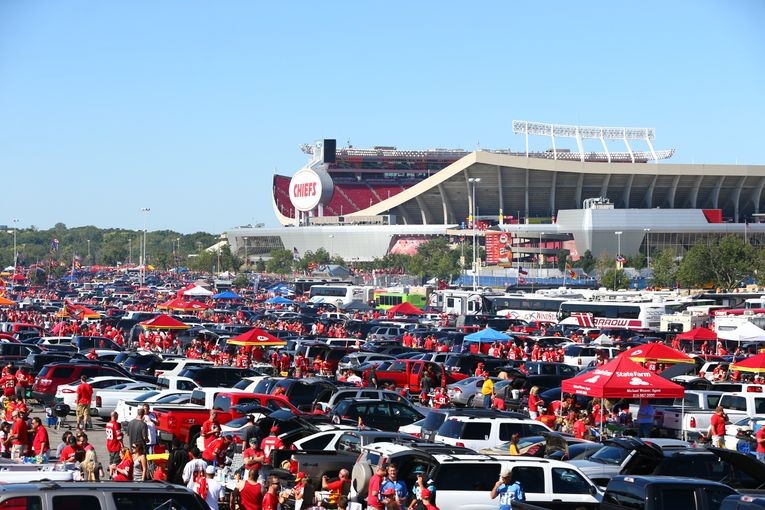
Clark Hunt, Chiefs owner and son of franchise founder Lamar Hunt, beats the ceremonial drum.
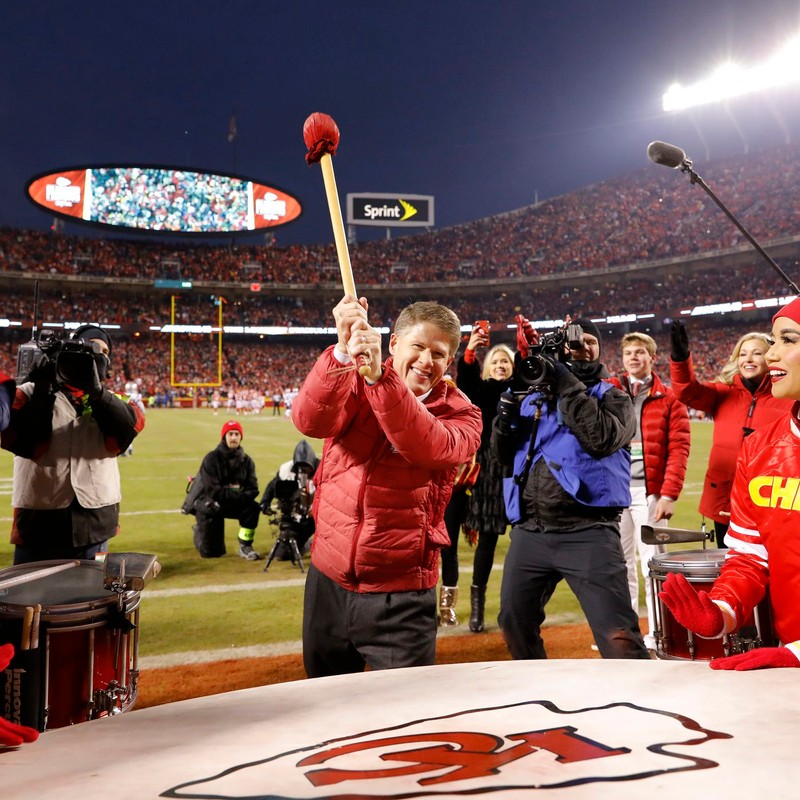
Backstory and Context
Text-to-speech Audio
In 1963, the Dallas Texans football franchise was moved to Kansas City, Missouri when franchise owner Lamar Hunt realized Dallas couldn’t support both the Texans and Cowboys. The team was renamed the Kansas City Chiefs after then-Mayor H. Roe Bartle, who had quietly pursued Hunt for the move of the franchise. Bartle was nicknamed ‘The Chief’ with long ties to Native American tribes and substantial involvement with the Boy Scouts of America, establishing the honorary tribe of Mic-O-Say.
For years, the Chiefs shared Municipal Stadium with Kansas City’s Major League Baseball team, the Athletics. When the formerly established National Football League agreed to a merger with the newly established American Football League in 1966, the popularity of the sport continued to grow. In response, city leaders planned to build a larger stadium that could accommodate both the Athletics and the Chiefs. The original plan failed and Jack Steadman, the Chiefs General Manager and Hunt's right-hand-man, proposed the idea of a sports complex which would house a separate baseball and football stadium side-by-side. Voters approved the $43 million dollar bond issue in 1967, however, the Athletics were moving to Oakland, California the following year and leaders would only agree to building a new baseball stadium if the city could secure an expansion team. The Royals were established in 1969 and the Jackson County (now Harry S. Truman) Sports Complex became a reality.
Designed by Kivett & Meyers, construction of the football stadium began in 1968 and was completed in 1972 with a capacity of 79,000 fans. In an honorary gesture to the Chiefs, Lamar Hunt deemed the name “Arrowhead Stadium.” The opening game on August 12 against the St. Louis Cardinals resulted in a 24-14 victory with a nearly-sold out crowd of 78,190 fans in attendance.
Throughout its fifty years of existence, Arrowhead Stadium has undergone many renovations to update and upgrade the facility. In 1991, a JumboTron screen was installed and in 1994 a natural grass field replaced the AstroTurf. In the following two years, the stadium was modernized and expanded further. Renovations from 2007 to 2010 included the installation of a new press box, premium seats and suites, wider concourses, high definition video screens, a 1,625-foot digital ribbon board, an increase in the number of concessions by 50 percent and restrooms by 80 percent, and the opening of the Chiefs Hall of Honor. Due to some of these improvements, the seating capacity was lowered and now offers 76,416 seats, the fifth highest in the NFL.
Known for being the loudest outdoor sporting stadium in the world, the Chiefs fans at Arrowhead Stadium set a Guinness World Record of 142.2 decibels during a victorious, Monday Night Football game against the New England Patriots on September 29, 2014. Phillip Robertson, with the Guinness World Records, was at the game the night the Chiefs broke the record; he went on to state “142.2 decibels is astonishing; I’m still in shock about it. I felt the pressure waves at a level that was quite intimidating.” Chiefs fans love their team and love being known as the loudest fans in the league.
Besides football, Arrowhead Stadium offers a range of experiences and traditions on game day. Starting before each game, tailgating is a must-do cultural experience with camaraderie, yard games, and an abundance of food and drinks, including an array of Kansas City’s famous barbeque. Once inside the stadium, the fans pack in tight to form a Sea of Red. In the singing of the National Anthem, instead of singing “home of the brave” during the last line, fans loudly yell, “home of the CHIEFS!!” Then as kickoff approaches, a significant Kansas City community member chosen as the “Drum Honoree” has the honor of beating the giant, ceremonial drum to the Chiefs anthem, symbolizing the heartbeat of the stadium.
Sources
Santsch, Rachel. "Arrowhead Stadium Breaks World Record." Kansas City Chiefs News. Sept 29, 2014. Accessed on May 21, 2016.
"Arrowhead Stadium." Stadiums of Pro Football. Accessed on May 21. www.stadiumsofprofootball.com/
GEHA Field at Arrowhead Stadium, Visit KC. Accessed September 12th, 2022. https://news.visitkc.com/facts/arrowhead-stadium.
Campbell, Matt. How did Arrowhead Stadium get its name? We answer a reader’s KC Q, Kansas City Public Library. January 17th, 2019. Accessed September 12th, 2022. https://kclibrary.org/blog/how-did-arrowhead-stadium-get-its-name-we-answer-reader%E2%80%99s-kc-q.
https://news.visitkc.com/facts/arrowhead-stadium
http://football.ballparks.com/NFL/KansasCityChiefs/aerial.jpg
https://i.ytimg.com/vi/sKpu8P3TQk8/maxresdefault.jpg
https://kclibrary.org/blog/how-did-arrowhead-stadium-get-its-name-we-answer-reader%E2%80%99s-kc-q.
https://kclibrary.org/blog/how-did-arrowhead-stadium-get-its-name-we-answer-reader%E2%80%99s-kc-q.
https://news.visitkc.com/facts/arrowhead-stadium
https://www.arrowheadpride.com/2020/1/17/21070182/clark-hunt-will-bang-drum-ahead-of-afc-title-on-sunday
